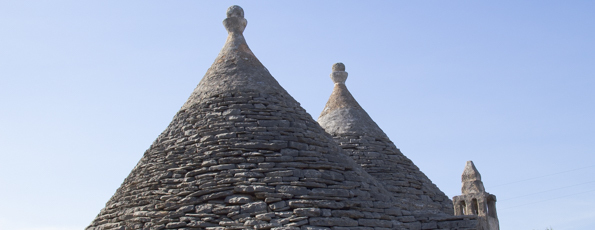
The trulli in Puglia could be the earliest recorded tax evasion scheme. It involved the use of drystone walling which was imposed on the builders of new settlements in the area from the fourteenth century as they could easily be dismantled and re-built after the tax inspector had gone. Possibly the initial purpose was because it was easy to get rid of unpopular tenants. However, it is recorded that in 1644 trulli were reduced to mounds of rubble to outwit tax inspectors sent by the King of Naples, when the region was part of his kingdom. Once the area was freed from the domination of Naples the inhabitants continued building in this style using mortar and hundreds of these buildings still exist today, notably in the town of Alberobello. Because it has more than a thousand of these curious buildings the town was declared a World Heritage Site by UNESCO in 1996.
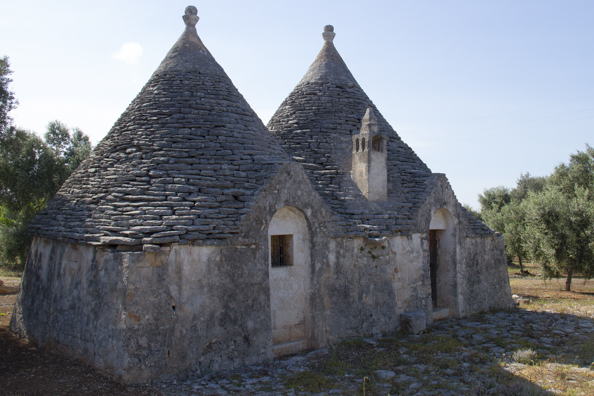
I had no idea what to expect when I arrived in Alberobello but as it was midday (and cold) my priority was finding somewhere nice to eat so I made my way towards the centre of the town and was very surprised to find some trulli blending in with the modern housing around me.
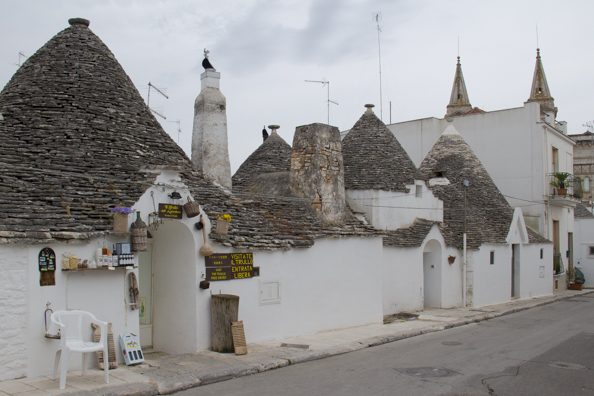
Ristorante Trullo dei Sapori was just what I had in mind, traditional in appearance and populated by locals. I ordered a pasta dish strozzapreti all norcina in salsa rosè (sausage pieces and mushrooms in a rosè sauce). While I was waiting I watched small snacks being delivered to the other diners and was delighted when one of them was placed before me. I really enjoyed the miniature bruschette.
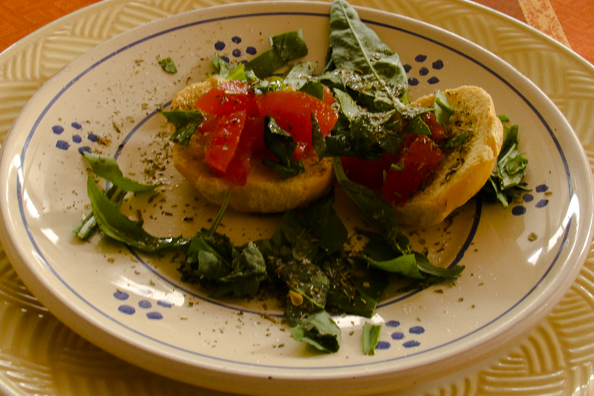
And my pasta was delicious.

While I ate I consulted the map I had obtained from a hotel where I had requested directions to the Tourist Information office. It was an excellent map and described the most important sites in three languages. The Basilica of SS Cosma and Damiano sounded interesting. In 1635 Giangirolamo Acquaviva d’Aragona (Count of Conversano) built a small church in Alberobello to reflect his devotion to the cult of the SS Medici patron saints. A painting of the Madonna between the saints Cosmos and Damian was placed on its altar. In 1882, on exactly the same site, construction of the present Basilica was begun under the direction of the well-known Alberobello architect Antonio Curri. The interior of this magnificent building still honours the Medici Saints.
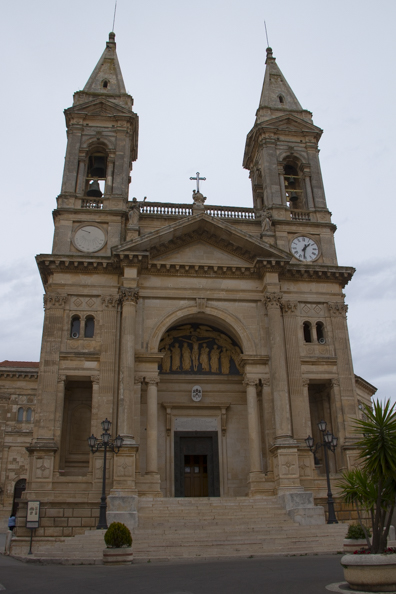
Close to the cathedral is the unusual trullo palazzo built on two floors, Trullo Sovrano. The second floor in this trullo is accessed by a flight of stairs whereas access to a top floor in smaller trulli is via a ladder. This property contains a collection of old farming implements, household items and notes on the walls describing life in a trullo life in times gone by. I enjoyed reading about the feudal system that existed in the early days, the farming techniques and the cooking methods – but most of all I remember the beautiful painting above the entrance.
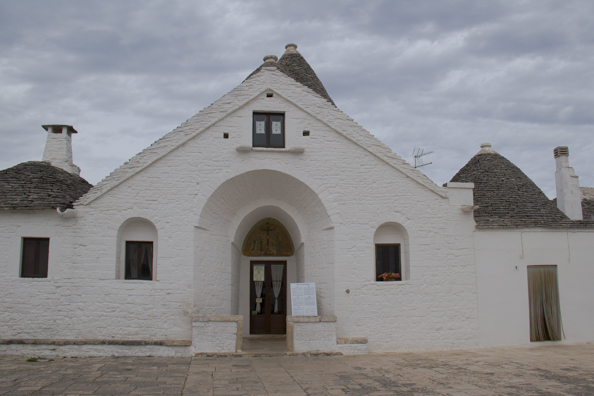
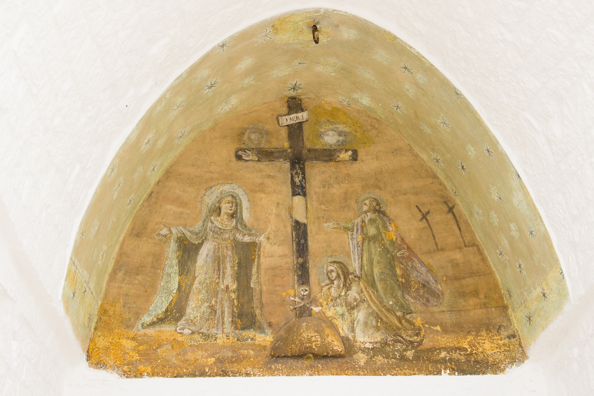
Running a shop in a trullo is a popular activity nowadays and it was interesting to compare the interior of a single storey trullo as well as browsing the goods for sale – mostly small bottles of flavoured alcoholic beverages.
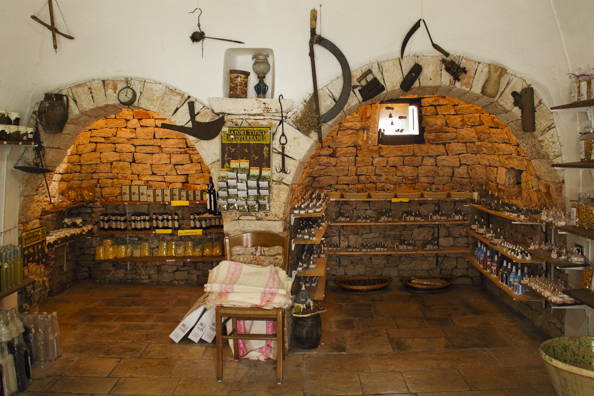
On my way to the largest area of trulli, Rione Monti I stopped at the viewpoint above it and beside the Church of Santa Lucia to enjoy the panorama of trulli below me. I could also see a large collection of earthenware pots on the terrace below me – a reminder that the construction of cisterns to provide water for the trulli dwellers was the first priority. Now most of the trullis have all mod cons.
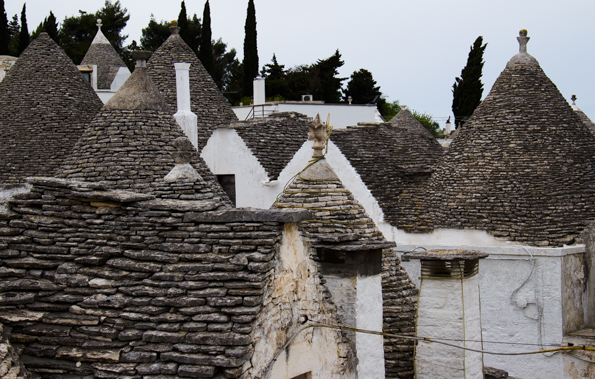
Wandering through a maze of narrow streets, lined by a mixture of trulli houses, shops and restaurants, I noticed that many of the roofs were topped by differently shaped pinnacles. These represent the signature of the builder.
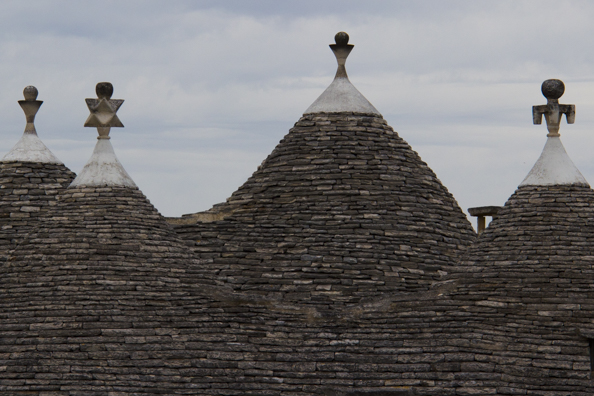
I was intrigued by white symbols daubed on some of the roofs a mixture of pagan, mystical and Christian but not original as they have been painted on following renovation of the roofs.
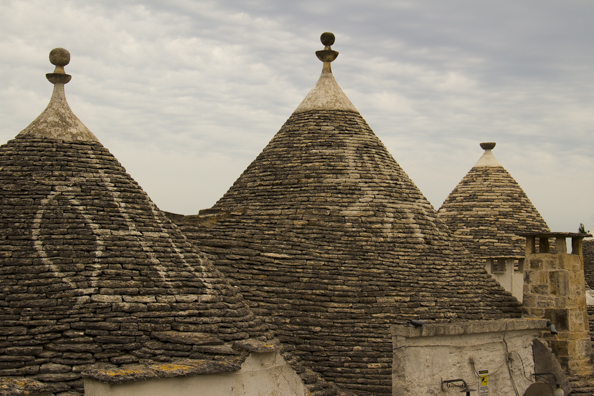
At the top of the hill around which the trulli are clustered I found the trullo church of Sant’Antonio. This lovely, simple place of worship was built in a few months and opened to the public in June 1927.
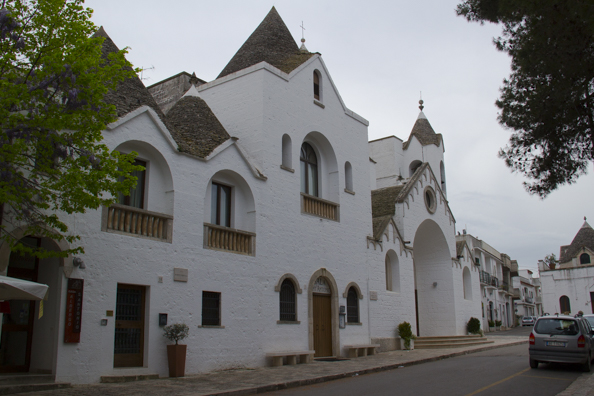
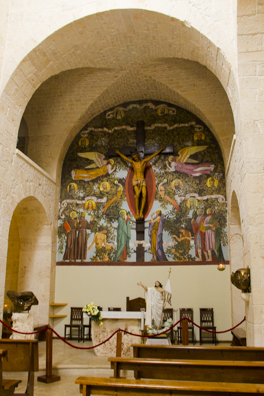
Aia Piccola is a smaller settlement than Rione Monte with 400 trulli. Aia means farm yard and in ancient times the trulli surrounded a large space that was used for threshing corn. This area is not so commercialised and does not attract so many visitors. I strolled through it on my way to the Casa Pezzolla (now the Museum of the Territory ) has been furnished to illustrate family life at the end of the 19th century. The average amount of space was never more than 50 square meters, even if often there were more than eight family members. The family lived on two levels. The parents’ bed and the cradle were placed on the ground floor. The older children slept in the loft, which was accessed using a ladder through a hatch. There was very little furniture around the fireplace – a few kitchen utensils, a table and chairs.
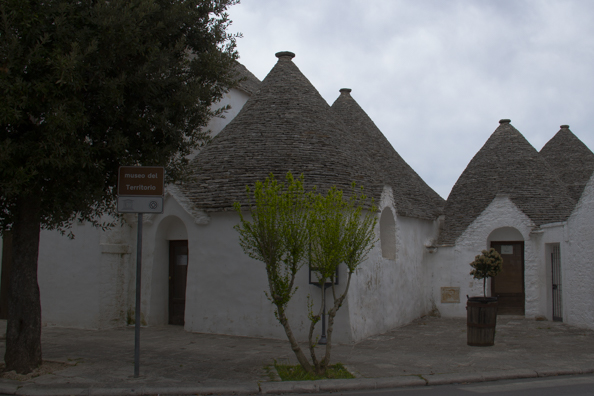
It did not matter that the museum was closed as for me Alberobello was a living museum. And the name? Alberobello means beautiful tree and perpetuates an ancient description in memory of a majestic tree under which early settlers gathered together to realize the dream of freedom. The municipal coat of arms depicts an ancient oak which was a typical tree of the forest.
*********************************************************************
Getting there
British Airways operates flights from London Gatwick to Bari and there are trains and buses from the airport to Bari Central railway station. From Bari Central there are trains every day except Sundays and public holidays to Alberobello operated by FSE a local transport company which also operates a daily bus service to Alberobello which does run on Sundays.
This article is now featured on GPSmyCity. To download this article for offline reading or travel directions to the attractions highlighted in this article, go to Walking Tours in Alberobello on GPSmyCity